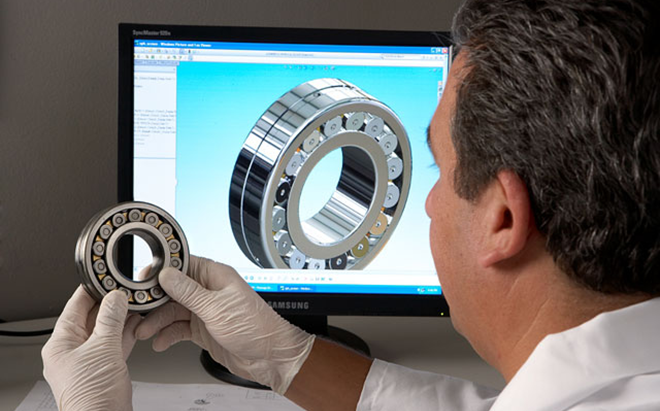Ball bearings are incredibly precise mechanisms produced with great care. Yet, their performance also depends on selecting the proper shaft and housing fits. If fits are too loose, or too tight, performance and design life will suffer.
Evidence of improper fitting for radial ball bearings includes noisy operation, excessive heat, and poor running accuracy. If the fits are too loose, there will be bearing seat damage and excessive wear, along with vibration, reduced radial accuracy, and unusual noise.
On the other hand, if the fits are too tight, there is an excessive reduction in radial clearance (particularly with miniature and instrument type bearings), overheating, and unintended preload.
Of course, identifying the problem is just the beginning. To prevent performance issues from occurring in the first place, keep the following in mind:
First, when designing housings and shafts, the bearing rings must be supported across their entire width and circumference. Additionally, the fit with the mating housing and shaft should prohibit creep and slippage. Finally, whenever possible the fits should allow for easy assembly and disassembly of the bearings, to facilitate modifications and/or maintenance.
Digging a bit deeper, when selecting fits for radial ball bearings, there are several key factors to consider:
- Direction, type and magnitude of loads: Generally, a tighter fit is desirable as the load increases.
- Ring rotation: Generally, for the rotating rings an interference fit is desirable, while for non-rotating rings a looser slip fit is preferred.
- Bearing size and type: Smaller, or miniature, bearings with their thin cross sections can experience radial play reduction when subjected to interference fits, while larger bearings can tolerate heavier interference fits.
- Tolerances of mating components: Fit tolerances should be adjusted based on the material type of the housings and shafts. When using an alloy with a different modulus of elasticity, a tighter fit is required.
- Operating temperature: When selecting fits as well as the internal clearance of the bearing, operating temperature must be considered, as it impacts thermal expansion.
- Running accuracy requirements: Running accuracy is influenced by the surface quality and geometry, such as roundness, of the shaft and housing (not just the bearing).
Actual fits are determined by the tolerances selected for shafts and housings in conjunction with the tolerance for the bearing bore and outside diameter. ISO 286, Geometrical Product Specifications (GPS) – ISO Code System for Tolerances On Linear Sizes, is often used to select tolerances and fits for both shafts and housings. Bearing tolerance may be found in the ABMA standards or the bearing manufacturer’s catalog. For detailed information on these and other factors that go into selecting the proper shaft and housing tolerances, we invite you to download and read, “Radial Ball Bearings – Fitting and Mounting,” a whitepaper to guide the decision-making process in designing a radial ball bearing system.
Let our team of experts help with your bearing needs. Contact them here or learn more about our custom solutions.


